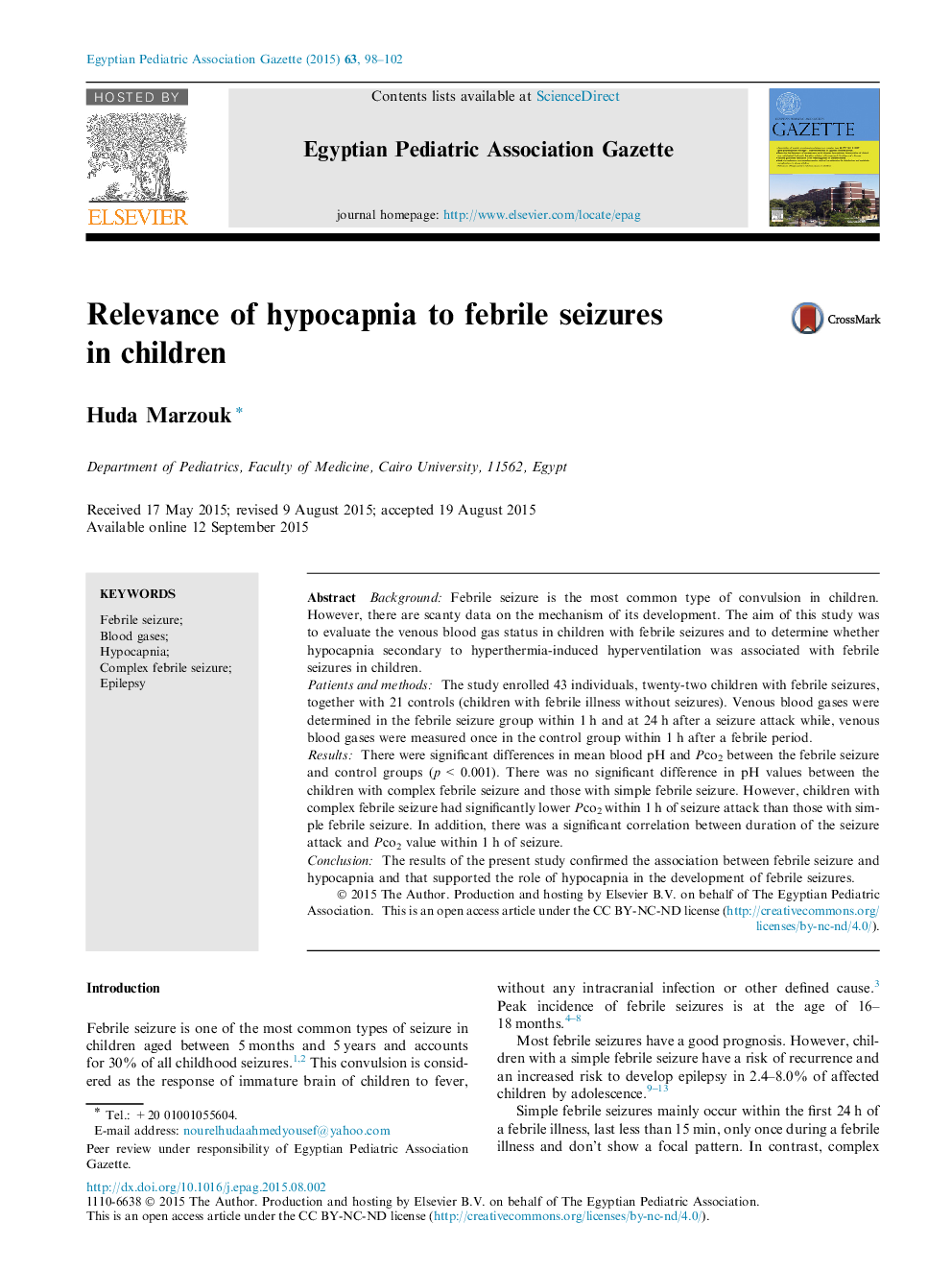| کد مقاله | کد نشریه | سال انتشار | مقاله انگلیسی | نسخه تمام متن |
|---|---|---|---|---|
| 4153564 | 1607032 | 2015 | 5 صفحه PDF | دانلود رایگان |
BackgroundFebrile seizure is the most common type of convulsion in children. However, there are scanty data on the mechanism of its development. The aim of this study was to evaluate the venous blood gas status in children with febrile seizures and to determine whether hypocapnia secondary to hyperthermia-induced hyperventilation was associated with febrile seizures in children.Patients and methodsThe study enrolled 43 individuals, twenty-two children with febrile seizures, together with 21 controls (children with febrile illness without seizures). Venous blood gases were determined in the febrile seizure group within 1 h and at 24 h after a seizure attack while, venous blood gases were measured once in the control group within 1 h after a febrile period.ResultsThere were significant differences in mean blood pH and Pco2 between the febrile seizure and control groups (p < 0.001). There was no significant difference in pH values between the children with complex febrile seizure and those with simple febrile seizure. However, children with complex febrile seizure had significantly lower Pco2 within 1 h of seizure attack than those with simple febrile seizure. In addition, there was a significant correlation between duration of the seizure attack and Pco2 value within 1 h of seizure.ConclusionThe results of the present study confirmed the association between febrile seizure and hypocapnia and that supported the role of hypocapnia in the development of febrile seizures.
Journal: Egyptian Pediatric Association Gazette - Volume 63, Issues 3–4, September–December 2015, Pages 98–102
